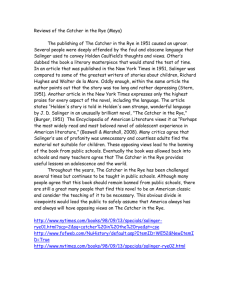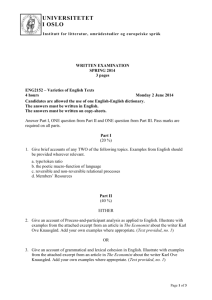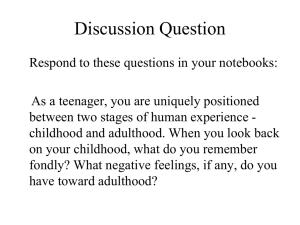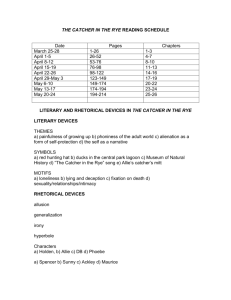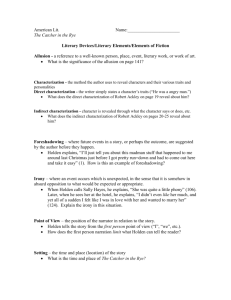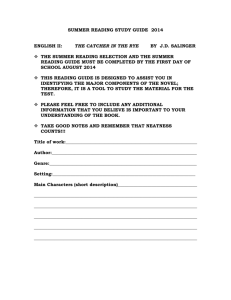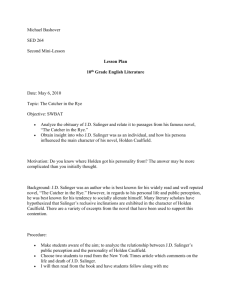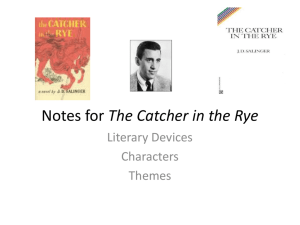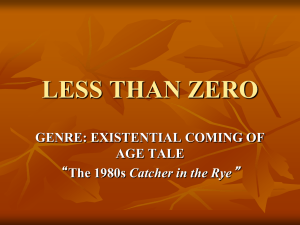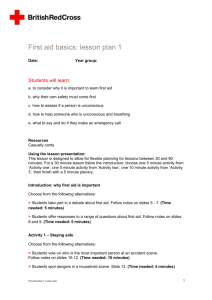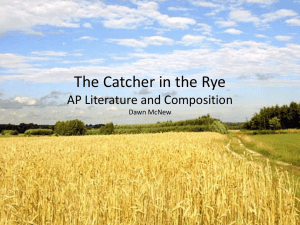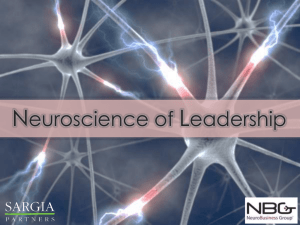Existentialism and The Catcher in the Rye
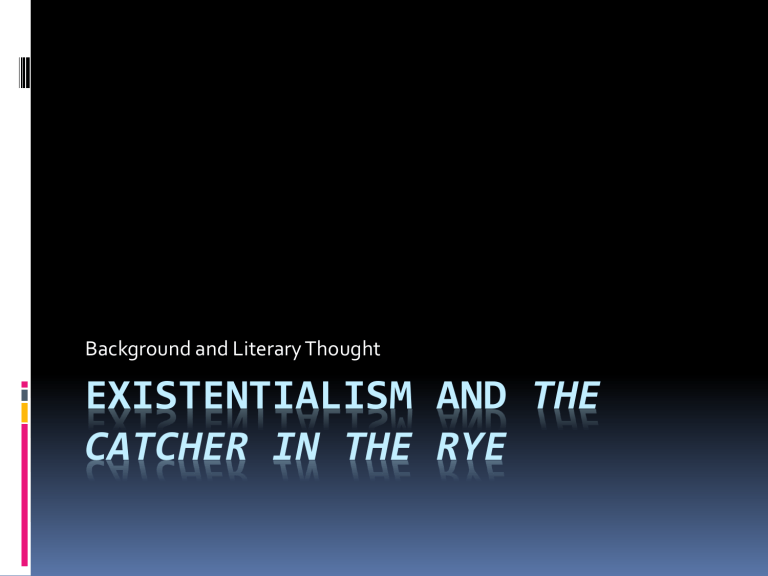
Background and Literary Thought
EXISTENTIALISM AND THE
CATCHER IN THE RYE
Existentialism Explanation
This term is related to the psychology of Karl
Jung who holds that behind each individual’s
“unconscious”(blocked off residue of his/her past) lies the “collective unconscious” of the human race---blocked off memory of our racial past, even our pre human experiences.
The Unconscious
The “unconscious” is shaped by the repeated experience of our ancestors, and is expressed through myths, religions, literature and dreams.
Existentialism and the Literary
Critic
The literary critic applies the term to an image, a descriptive detail, a plot pattern, or a character type that occurs frequently in literature, myth, religion, or folklore; therefore, believed to evoke profound emotions in the reader because it awakens a primordial image in his/her unconscious memory; thus, calls into play illogical, but strong responses (the archetype).
The archetypal critic tends to see each work of literature as a portion of the total human experience.
Point of View (P.o.V): In
Literature
Point of View is how you perceive your environment. In a literary sense, the author’s point of view is determined by the way he/she manipulates reality.
2 Types of P.o.V
Romantic P.o.V: manipulates the character, conflict, and environment so that events are resolved (life makes sense).
Ironic P.o.V(existential): life makes no “real” sense---only the “sense you choose to make of it. Deals with the absurd series of events that each person tries to make sense of.
Things to think about…
WHAT IS REALITY?
“Reality” is the way people perceive the world around them.
Does everyone see or think reality the same way?
Objective Reality: “we” share it equally
-physical presence
Subjective Reality: the individualized way each of us “sees” experiences.
More to think about…
ARE YOU NORMAL?
What is NORMAL?
-What everybody thinks is average
-Society, in general, views “normal” as everybody being the same
-Normal is situational
-Can the same reaction be normal and abnormal?
-Is normal an individual response or is it a collective?
WHAT IS BEHAVIOUR?
-behaviour is the way in which someone acts, or the way someone acts towards someone/something.
-Behaviour, in clinical terms, an organism’s response to external stimuli. Behaviour depends upon FORMER experience.
WHAT IS STIMULUS?
-stimulus is something that causes a response to any sort of environmental activity or change.
The Catcher in the Rye
Published in 1951
Written by J.D. Salinger
Holden Caulfield, 16 is the protagonist
Written in 1 st person, existential point of view
Set in 1950s, first chapters are set at an all boys boarding school Pencey Prep, rest of the book takes place in New York City
More About Holden…
Sees everyone and society as fake or phony(he uses this word excessively)
He is smart, well-read, and handsome, but he is viewed as a failure and loner
He has been expelled from several prestigious schools
He is from an upper class family, he is the 2 oldest of 4 nd
He often feels like he does not fit in, he gets depressed, he smokes, wants to drink, and uses profanity frequently
About J.D. Salinger
He was a recluse---never went out of his house, lived in seclusion for more than 50 years.
Died Jan. 27, 2010 at 91
thought at one time to be the most important American writer to emerge since World War II
sympathetic understanding of adolescence and its fierce if alienated sense of morality and distrust of the adult world, the novel struck a nerve in cold war America
The Catcher in the Rye continues to sell more than
250,000 copies a year in paperback.
